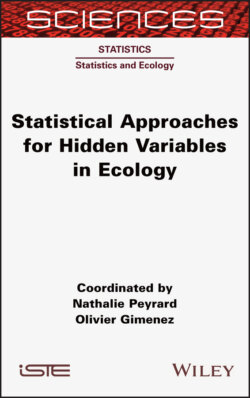Читать книгу Statistical Approaches for Hidden Variables in Ecology - Nathalie Peyrard - Страница 15
I.5. Directions for further perspectives
ОглавлениеThe examples described above, along with those presented in the following chapters, highlight the immense flexibility of latent variables models. These models, involving one or more latent layers, provide a rich framework for the description of complex dependency structures, and/or for the approximation of a mechanistic description of the phenomena involved.
However, it is important to note that the most sophisticated models are almost always the most complex in terms of inference. It would be wrong to assume that inference simply “happens”, whatever the statistical approach (frequentist, Bayesian, etc.). At the time of writing, there is no fully generic approach suitable for use with all models, and this is unlikely to change in the near future. Even the best-established algorithms (EM, MCMC, etc.) require users to have a good understanding of the underlying principles in order to guide and control their behavior, and/or to adjust the algorithm as needed. This need for adjustment is clearly visible in the chapters of this book.
To conclude this introduction, we wish to highlight two areas for further research in ecology, drawing on statistical modeling of hidden variables, which are not covered in this book but which show promise: namely the integration (or combination) of data from multiple sources, and the use of participative scientific data.
Table I.1. Chapters and contents
Several works have recently been published on the integration of data from multiple sources in the field of ecology (Miller et al. 2019; Isaac et al. 2020). The aim of the authors is to systematically improve the precision of estimated data, potentially decreasing sample size, and to enable the estimation of parameters that cannot be approximated by any other means. Data integration generally involves a hierarchical modeling approach in which the hidden variable is present in all of the sources used in its estimation.
Data from participative scientific activity has also received increasing attention in the literature in recent years (Dickinson et al. 2012; McKinley et al. 2017). This is due to the increasing availability of the data, and to the fact that information can now be collected across an increasingly broad spatial and temporal scale. Participative data sources are a fascinating subject of study in statistical ecology, raising a number of new challenges in terms of spatial bias in sampling, or variations in participant expertise. Once again, a clear distinction between the ecological processes embodied by the hidden variables and the associated observation methods is essential in order to develop a full response to the ecological question.
